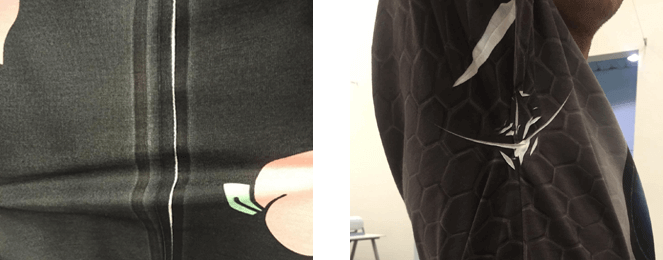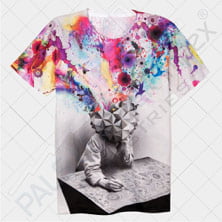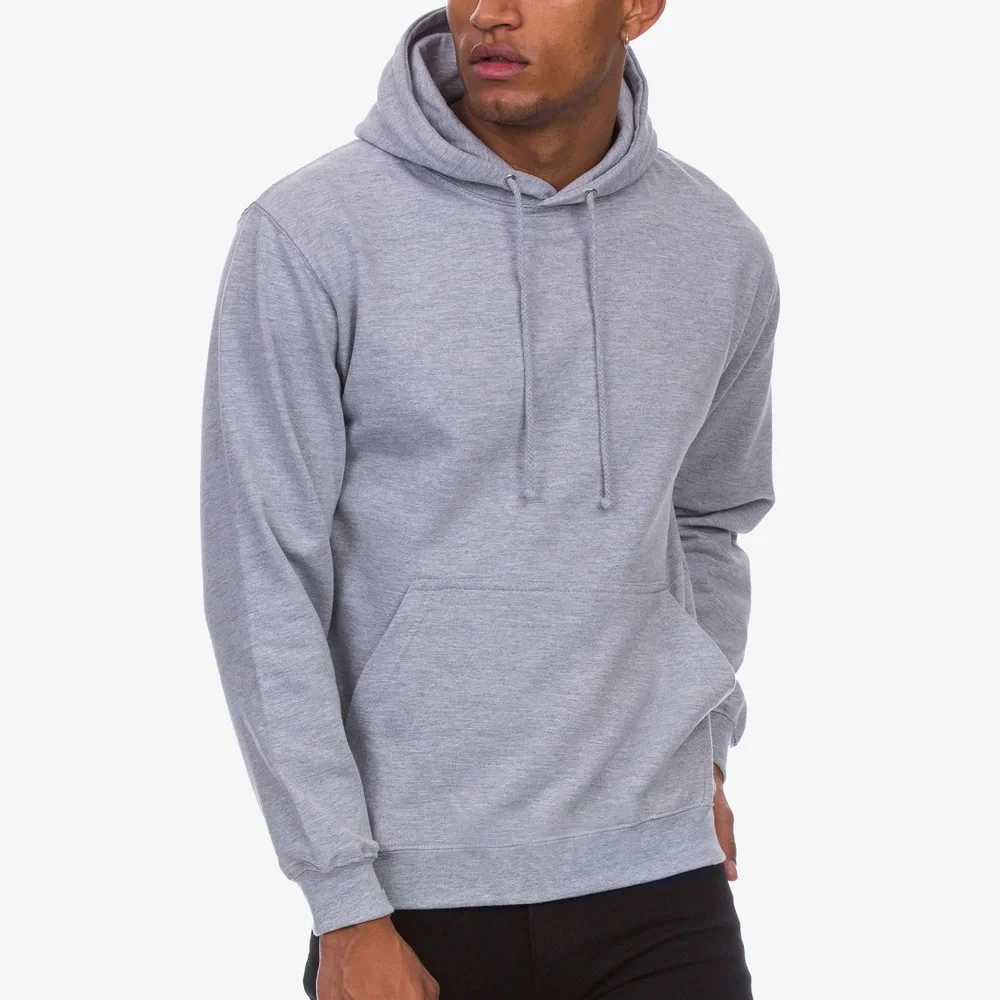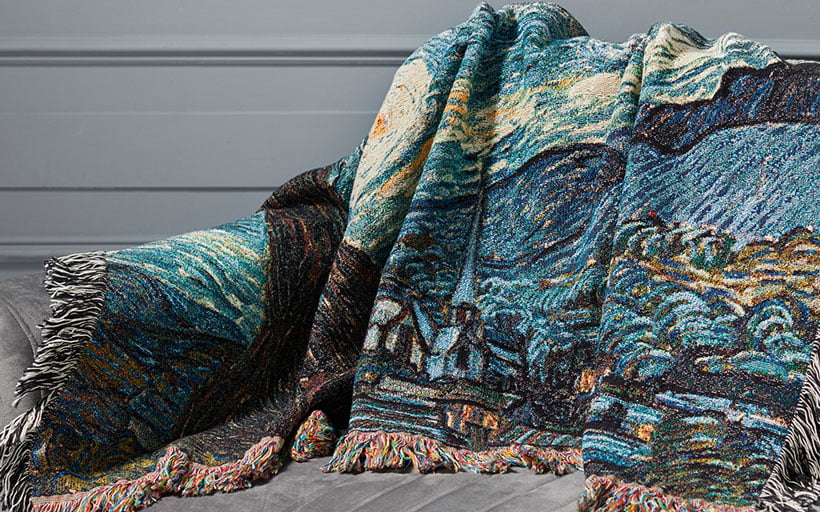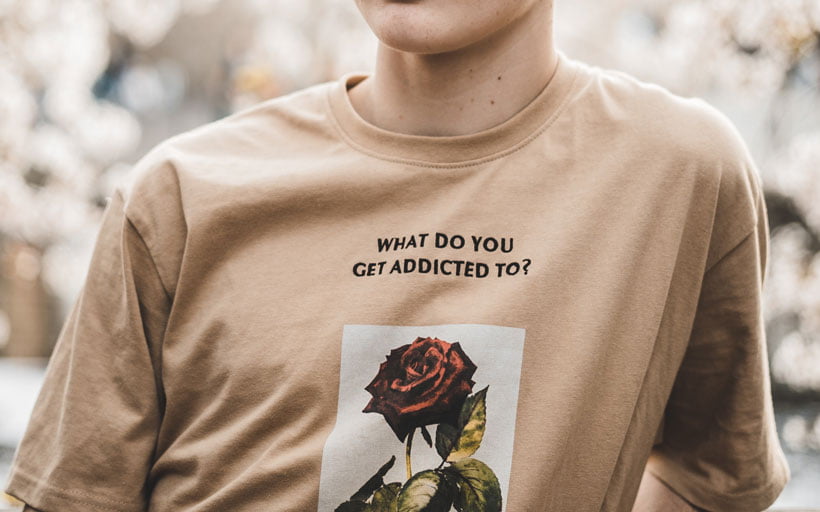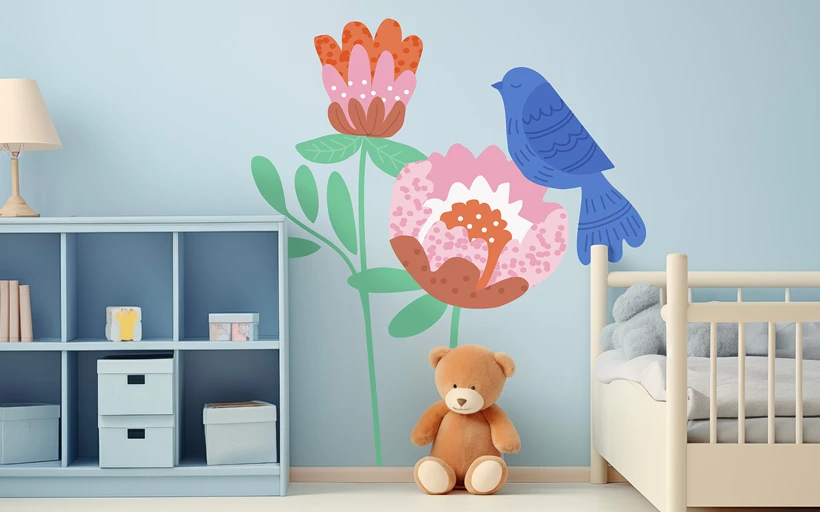Understanding how sublimation printing works

Tags
Interested in joining the world's leading print on demand platform?
“Sub-li-what-now?!” If you’ve ever wondered what this strange-looking word actually means — then wonder no more.
No, it isn’t an underwater warship or on-screen translations that help you understand a foreign film; it’s a high-tech printing process used mostly for print on demand apparel. Today we’re going to pick it apart — we’ll cover what it is, how it works, discuss the pros and cons, when to use it — and when not to.
What is sublimation?
Let’s start with the broad strokes. What exactly is sublimation?
In simple terms, it’s a method of printing that transfers a design into a material or fabric using ink and heat.
In the world of apparel, it’s a game changer in that it allows whole garment prints — designs that go seam-to-seam.
The sublimation printing process
So how does sublimation work? Well, sublimation printing uses heat to essentially bring ink and fabric together as one.
First, a design is printed onto special paper. The inks that are used turn into gas when brought under heat, then combine with the fabric and permanently print onto the fabric. The effects are permanent and less prone to fading, as the ink is embedded in the fabric or substrate rather than simply laying on top like a normal print.
The process is almost like a tattoo, but instead of for your skin, it’s for your chosen product. The heat opens up the pores of the fabric, then with the applied pressure the ink cools and returns to a solid form.
The result is a permanent, full colour image that won’t crack, peel or wash away from the substrate. The process allows the ink to go from a solid to a gas without turning to liquid, a bit like dry ice. The conversion is initiated by heat and controlled by pressure.
This quick and effective digital print method is growing in popularity for smaller batch orders and those designs that rely on the details. Sublimation printing is also known as ‘all over printing’ as it allows you to choose a design that can literally go from seam to seam.
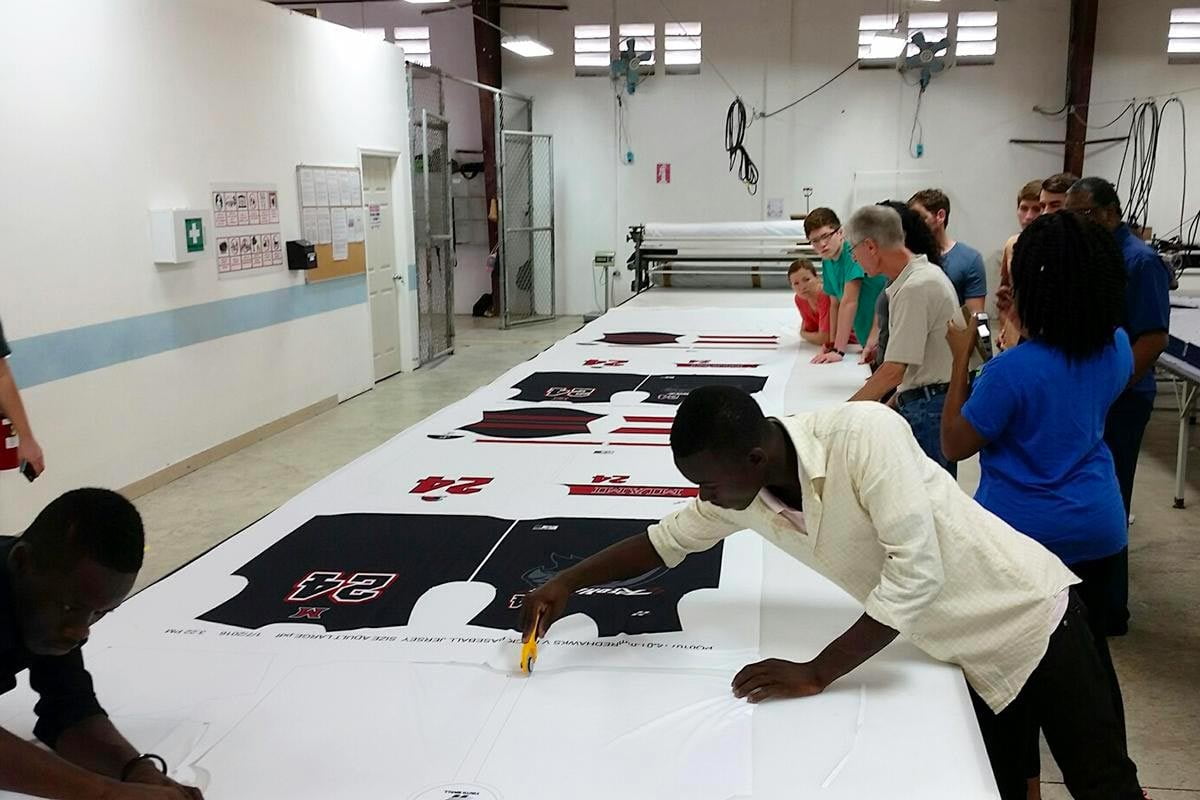
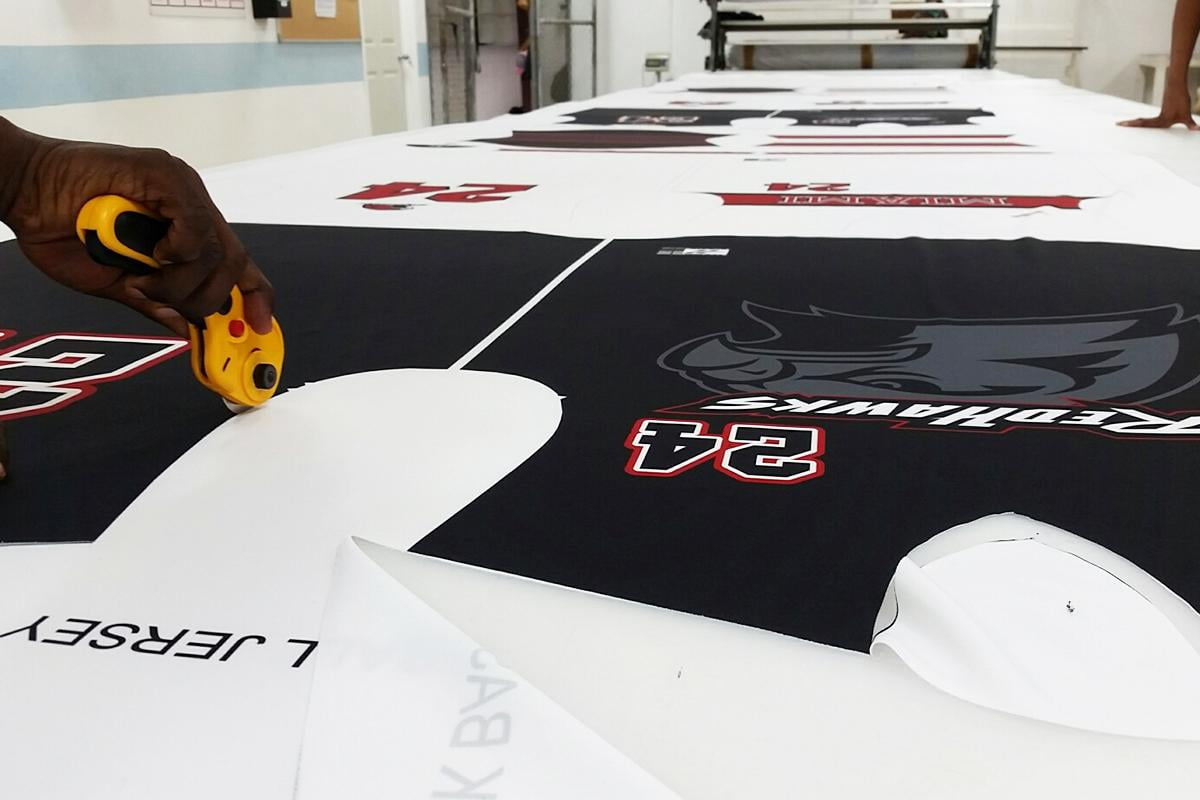
 Images courtesy of Global Orphan Project, sourced via Flickr under Creative Commons 2.0 license.
Images courtesy of Global Orphan Project, sourced via Flickr under Creative Commons 2.0 license.
Although primarily popular for print on demand t-shirts, the method is also available on ceramic, wood and metals etc, that have a special coating on to receive the sublimation inks.
The pros and cons
The pros
The most exciting upside when it comes to this method is purely the freedom you have with your designs, which is not always offered by other methods.
On one side of the spectrum you can go as crazy as you like. Why not print a whole t-shirt that looks like a burger? Or a cat flying across (a beautifully printed) galaxy background?
Equally, you might want to keep it classy with a photo of a famous skyline or landscape. The possibilities are almost endless, which will keep you coming back for more.
The longevity of the design is a plus point, with a design that won’t crack, peel or fade. Even after going through the washing machine countless times, your garment will never be demoted to the back of your wardrobe!
Sublimation printing is suitable for small batch orders, seam-to-seam designs and garments with a large number of design variations and applications.
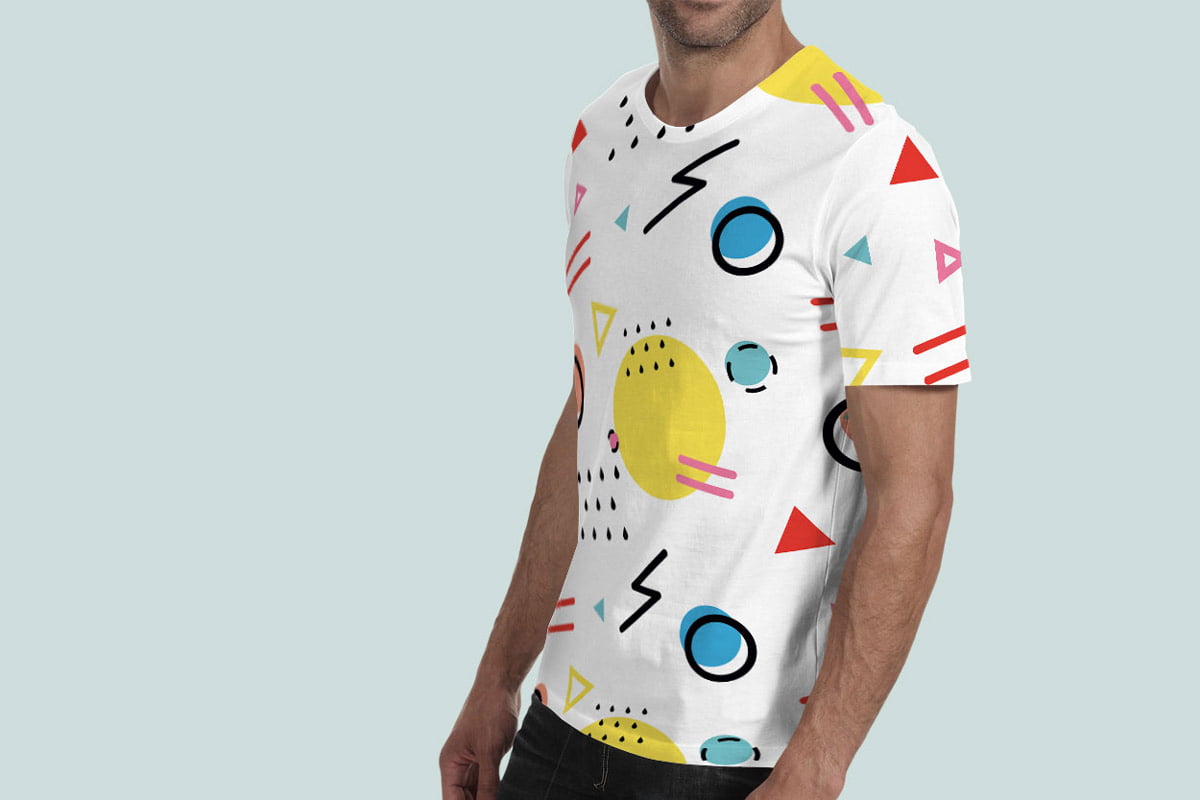
The Cons
The Cons lay mostly with the choice of materials. Sublimation printing is only suitable for garments that include polyester (100% polyester or polyester blend). Although sublimation is possible on other materials such as cotton, the image will not be permanent as it is on ‘man made’ fabric and it isn’t recommended.
If you wanted to go for the vintage/distressed look, which is all the rage right now, choosing a fabric with a lower percentage of polyester in it would give you that finish.
Another potential problem to watch out for is white creasing. Sublimation works by printing a design into white fabric, and if there are areas of the garment that are unreached by the design, they’ll stay white. This can be caused by accidental folding or small amounts of moisture that accumulate on the transfer paper.
Designs that work well with Sublimation printing
Sublimation printing works particularly well on quirky, dramatic and almost ridiculous designs- a massive trend over the last couple of years, seen in both high and low end stores.
For example:
Now this t-shirt probably fits under quirky, dramatic AND ridiculous. And sublimation printing has allowed for the full effect to take place. The t-shirt is completely covered by design and uses a vibrant range of colours.
The repeated design below also works well. Again because of the full coverage aspect of the design, the pattern of the print is carried on all around the t-shirt, just using the ends of the garment as natural finishing points.
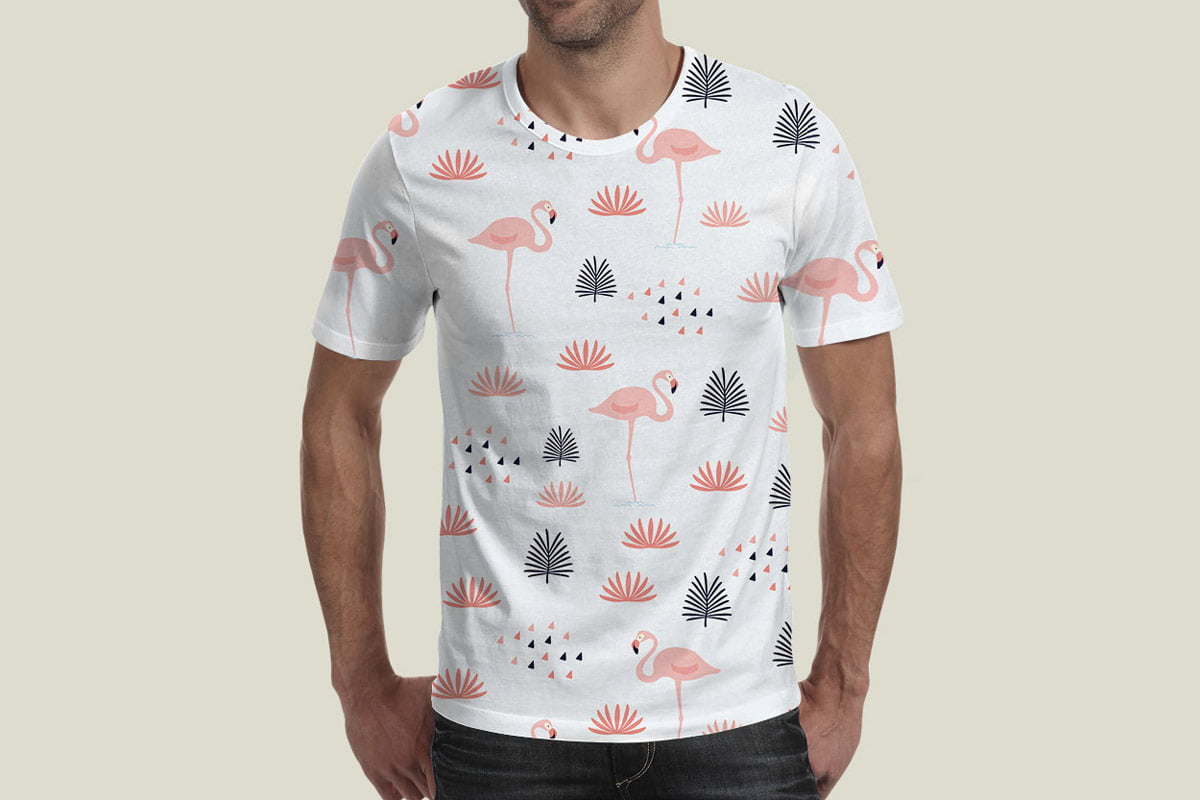
Another type of design that works particularly well with sublimation printing, is photography prints. The method allows you to fill the whole surface with the photograph, instead of just placing it on the front of the garment in a rectangular fashion.
For example:
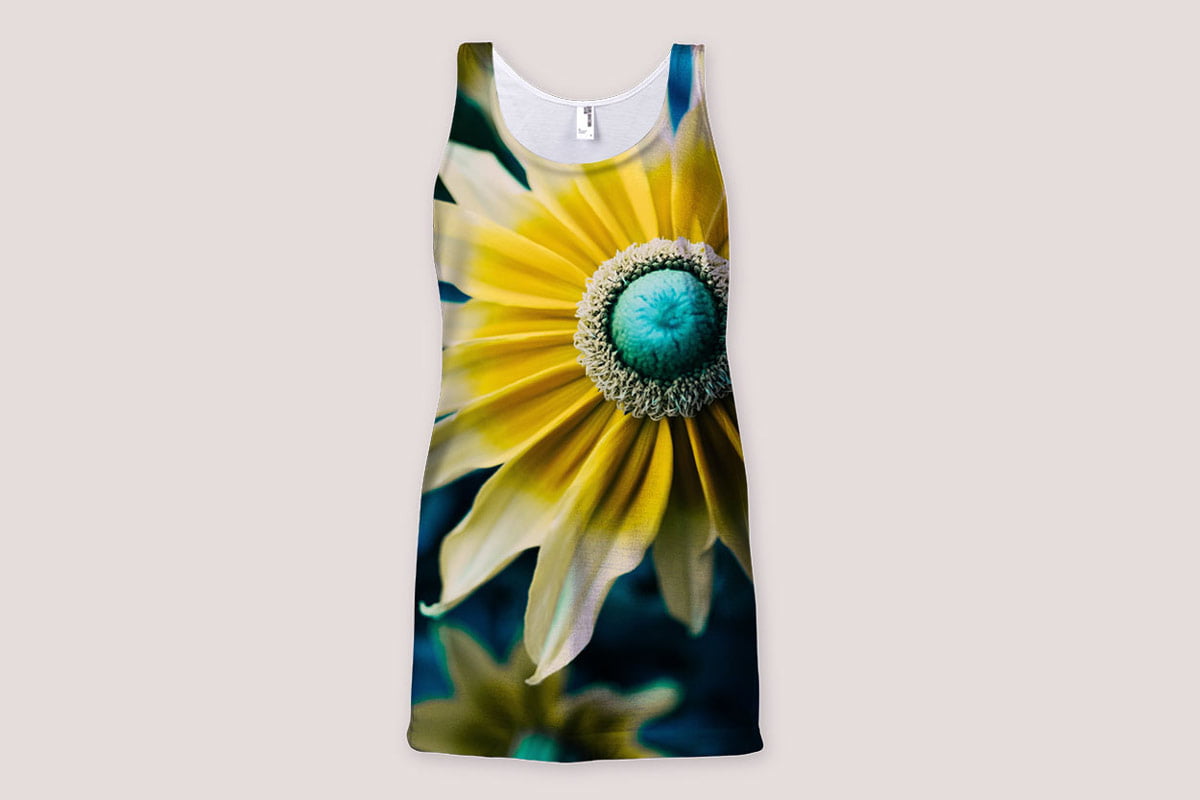
The tank top above uses the image of the flower, and a more muted background (because if you can fill the whole tank top, why not do so?)
Photography has also been used on the design below, by depicting a whole landscape onto the t-shirt, which is particularly effective because of the angles used.
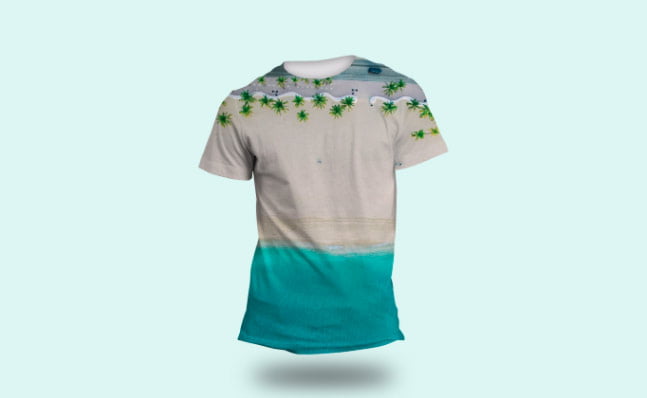
Sublimation also works well when your garment requires a number of different logos or designs. With traditional printing, you may be charged for each separate logo application — whereas, with sublimation, a large number can all be incorporated and printed in one go.
Designs that don’t work with sublimation printing
Designs with block colours or designs that require excruciatingly exact placement may not work as well with sublimation printing. With designs that involve slogans, direct to garment (DTG) printing can work better. DTG printing is essentially like using a normal printer, but just for t-shirts. So the garment is run through a special flatbed printer and the designs are applied.
If you only need one logo in the centre of your garment, sublimation may not be the ideal way to go, purely because it’s generally more expensive to ‘print all over,’ than it is to apply one logo front and centre.
One of the keys to using sublimation printing effectively is knowing the methods limitations and picking a design wisely. Reading through the pros and cons and looking at the examples above, should help you to be able to decide if the design you have in mind would work with sublimation printing, or if you are better off choosing DTG.
Sign up for free today, learn more about selling on a Shopify print on demand store or browse our range of dropshipped sublimation products.
